Introduction
One of the nicest gifts one can give or receive is a flowering potted plant. Flowering plants are not just for holidays or for special occasions. Blooming plants can be given throughout the year and used for interior decorations anywhere people live, work, or play. Many potted plants have exquisite blooms that can provide a long-lasting living bouquet when simple guidelines are followed. Some plants may be retained and made to bloom again, while others are best discarded after they pass their initial flowering period. After bloom, few flowering plants remain very attractive. Consequently, an additional selection of the more easily maintained foliage plants should be made for continuous decorative display.
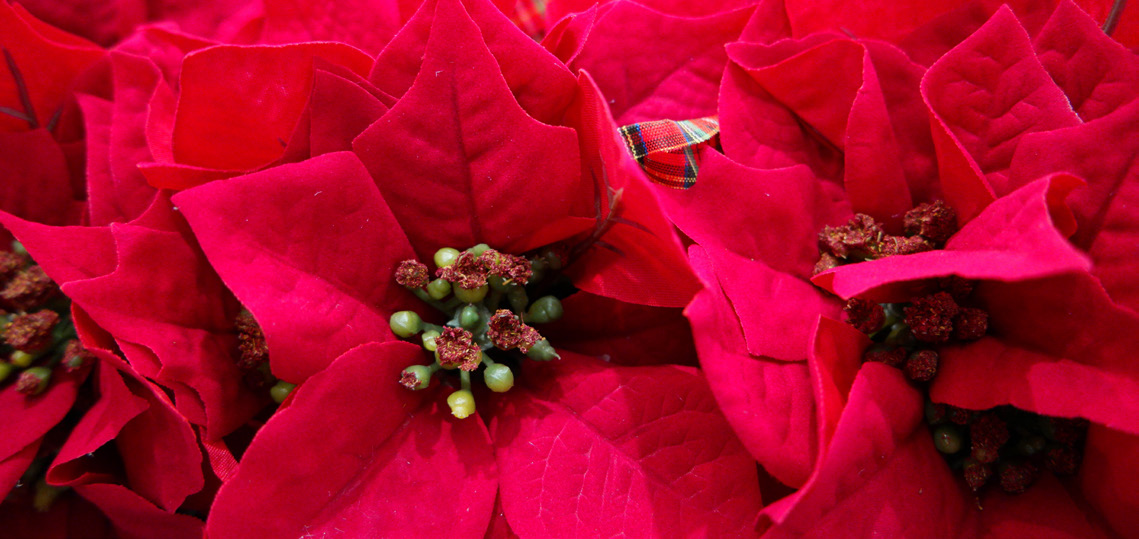
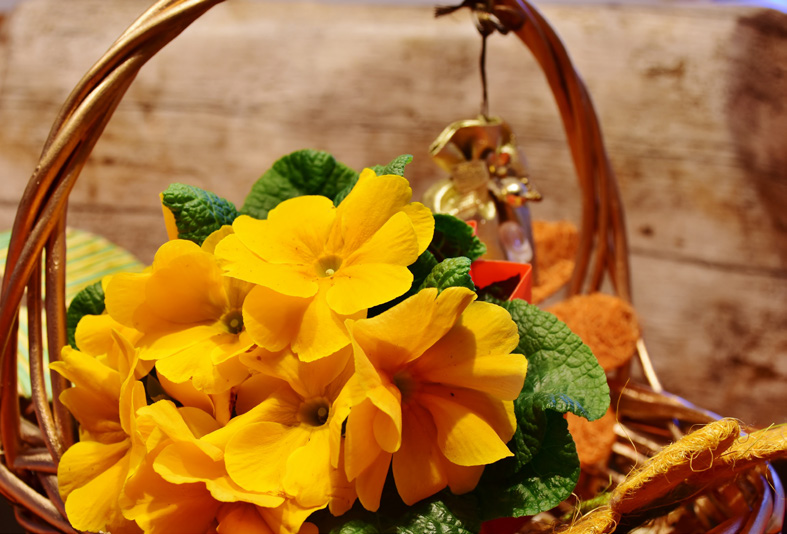
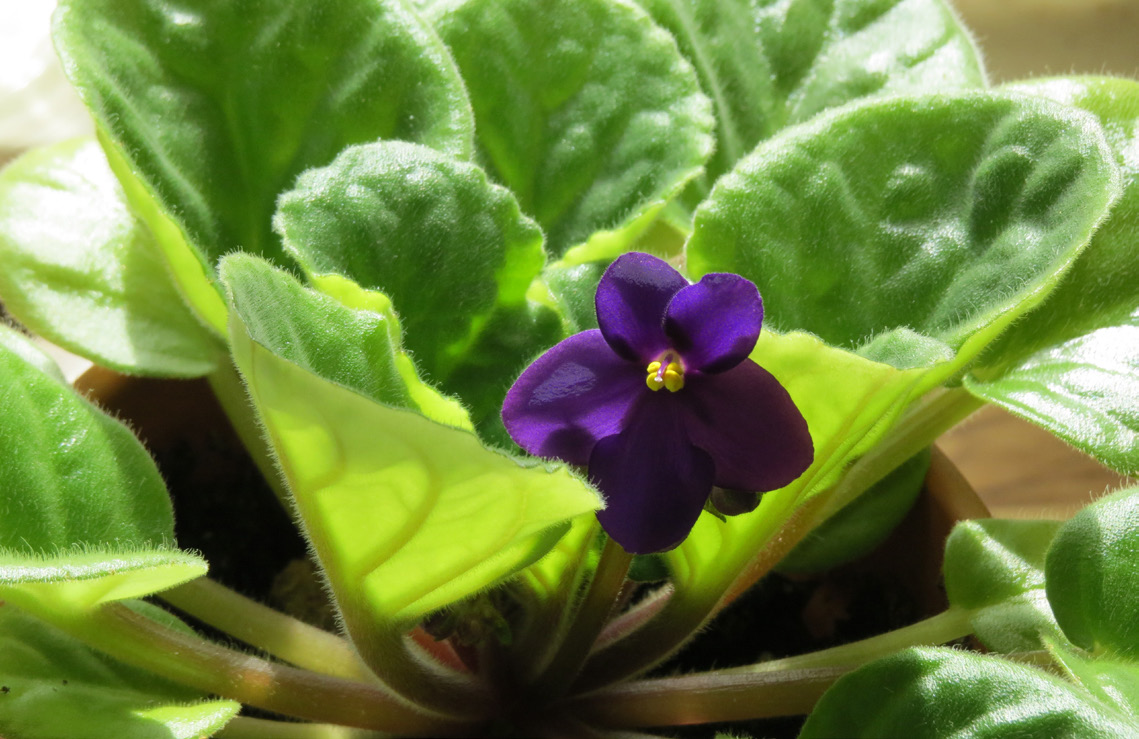

How to Enjoy Plants Longer
You do not need a “green thumb” to make your gift plants last a long time. The wise flower plant buyer will select plants which have been grown properly and maintained in prime condition by reputable floral outlets. Well-shaped, healthy plants with dark green foliage and a large number of buds will help insure maximum satisfaction. Many florists attach “tags” to their plants which give tips on their care. Other specific suggestions for individual plants are given in the next section of this publication. In general, however, all it takes to enhance the blooming period for most plants is to do these four things:
- Keep the soil moist, but not soggy.
- Give the plants full sun or bright light.
- Provide them with cool temperatures.
- Keep them out of drafts.
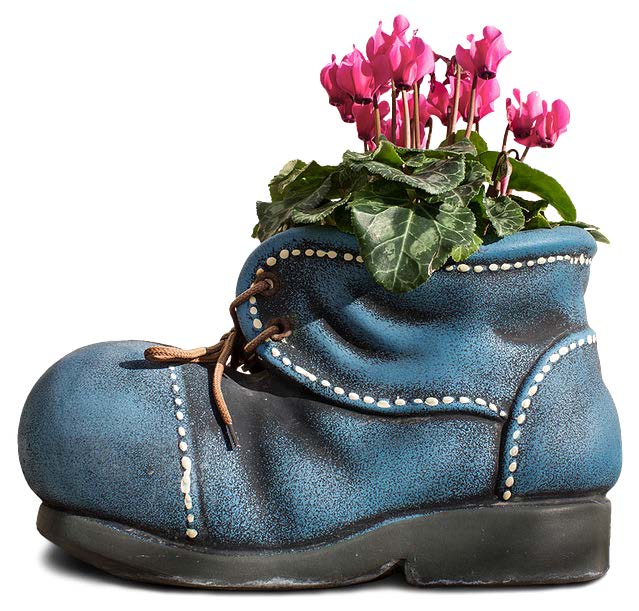
Watering
Remember, do not overwater. Many plants are killed this way. Never water plants by rule of thumb, such as every other day, or twice a week. Plants should be checked daily and watered only when they need it. The technique of feeling the soil just below the surface still works best. Once the soil is thoroughly moistened, it is not usually necessary to water again until it begins to dry. Plants in a cold room need less water than those in a warm, dry atmosphere. Blooming plants and those with much foliage require more than those without bloom or with sparse foliage. The type or construction of the container and the growing medium utilized will also alter the watering frequency. A relatively small plant in a large container will also usually require less water.
Potted plants can be watered from either the top or the bottom. Perhaps watering is best done by taking plants to the sink, removing any pot decorations or punching holes in the foil wrap and applying water until it drains from the bottom of the pot. After the water stops draining, replace pot decorations and bring it back to the viewing area. A shallow saucer may also be placed under the pot to collect any drainage water. Discard any water collected because it may contain excess soluble salts which could be re-absorbed by the soil. Fungal diseases and insect problems are also encouraged if plants are left in standing water.
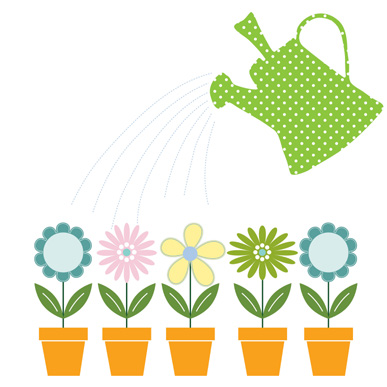
Light
All foliage and flower plants need light to keep them in good condition. Flowering plants usually have the highest light requirements. The brightest window in your house will probably face south or southwest and should be ideal, especially during the winter months. Plants placed in poor light will become yellow and have spindly shoots. The flowers will die off faster and the plant will react poorly to house conditions. Keep the plants in the window and move them to other locations only for brief special occasions. Artificial light from lamps will help supplement low winter sunlight. During the summer, direct sunlight and high temperatures can shorten bloom life.

Temperature
The best temperatures for most flowering plants are cooler than most of our homes and buildings. A hot, dry atmosphere probably does more to shorten bloom time than any other factor. A location which runs about 65°F during the day and 50 to 55°F at night would be good for most flowering plants. Even though a slightly colder zone may exist next to the window, it may be advisable to move your plants to an even cooler location such as another room or basement at night. Some blooming plants tolerate or may even require warmer temperatures. Rapid and severe temperature fluctuations should be avoided.
Humidifiers in the home or cultural methods which increase the humidity around the plants help to some extent. A relative humidity as high as 50 to 60 percent is desirable.
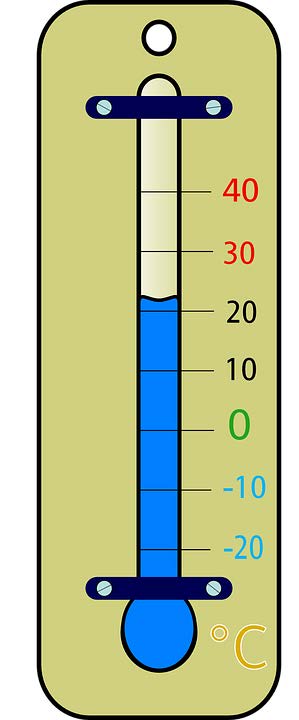
Drafts
Avoid exposing a flowering plant to a draft. Air movement from an air conditioner, window, door, fan, fireplace, or radiator will cause rapid water loss from the foliage and flowers. Roots may be unable to absorb enough water to prevent wilting and premature flower or bud drop.
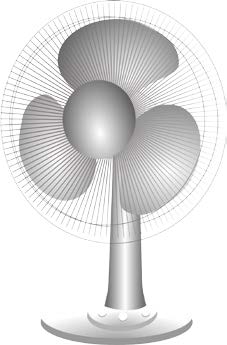
General Maintenance
Faded blooms, yellow leaves, and damaged stems detract from the appearance of a plant and should be removed. To maintain their uniform shape over a long period of time, rotate the plants occasionally to expose all sides to the light source. After one year, a growing plant may need to be shifted to a larger container.
While in flower, newly purchased plants will not require fertilization. If the plant is retained for growth after bloom, fertilizer must be applied. Many dry and liquid fertilizer products are available on the market. Follow label directions for concentrations and application rates during the periods of active plant growth. Over-fertilization leads to a buildup of harmful soluble salts, especially during the winter months or when the plant is not actively growing.
Re-Blooming Plants
One must realize that plants received from a florist were grown under ideal conditions which the average home can seldom duplicate. If you attempt to flower these plants a second year, you should not expect the same quality as a greenhouse-produced plant. Some people may not feel it is worth the time and effort to grow these potted plants for a second year, so they enjoy their plants, compost them after bloom, and plan on purchasing fresh, new plants. They feel the exacting manipulation of such factors as day length, light intensity, watering, feeding, pinching, growth regulators, temperature regulation, and pest control is simply not worth the effort. However, for the home gardener who likes a challenge, the following resume of some of the more popular gift plants has been compiled along with tips on how to prolong their bloom.
African Violet
Violets are perhaps the most popular house plant today because of their diverse colors, year-round flowering, and relatively easy culture.
Flowering is primarily influenced by light. It may be necessary to try various locations to determine the best site for continuous flowering. If light is too intense, the foliage may be bleached and burned. Insufficient light causes poor flowering and elongated petioles. rom November through February, place plants under direct sunlight. Move the plants into indirect bright light from March through October.
African violets can also be grown entirely under artificial light from two 4o-watt fluorescent tubes mounted in an industrial fixture. Gloxinias, episcias, tuberous-rooted begonias, and ever-blooming begonias can also be grown with this installation. Special plant growth tubes or one standard cool white and one daylight tube placed 8 to 12 inches above the foliage will provide minimum light necessary for flowering. At least 12 hours of light are required each day, but 18 hours of light increases plant growth and flowering. A four-tube fixture approximately doubles the light intensity, and produces more desirable plants.
Use water at room temperature for surface application to violets. Cold water on the foliage causes spotting. Capillary-bottom watering is convenient and satisfactory. Wick-watering containers are especially good for African violets. The soil is kept moist, neither excessively wet nor dry.
Night temperatures of 65 to 70°F are satisfactory for violets. Day temperatures can be five degrees higher. Foliage will turn downward and flowering will be retarded if plants are exposed to temperatures lower than 65°F. Fertilize monthly with a complete all-purpose house plant fertilizer. Remove faded flowers. Repot when plant appears too large for its container.
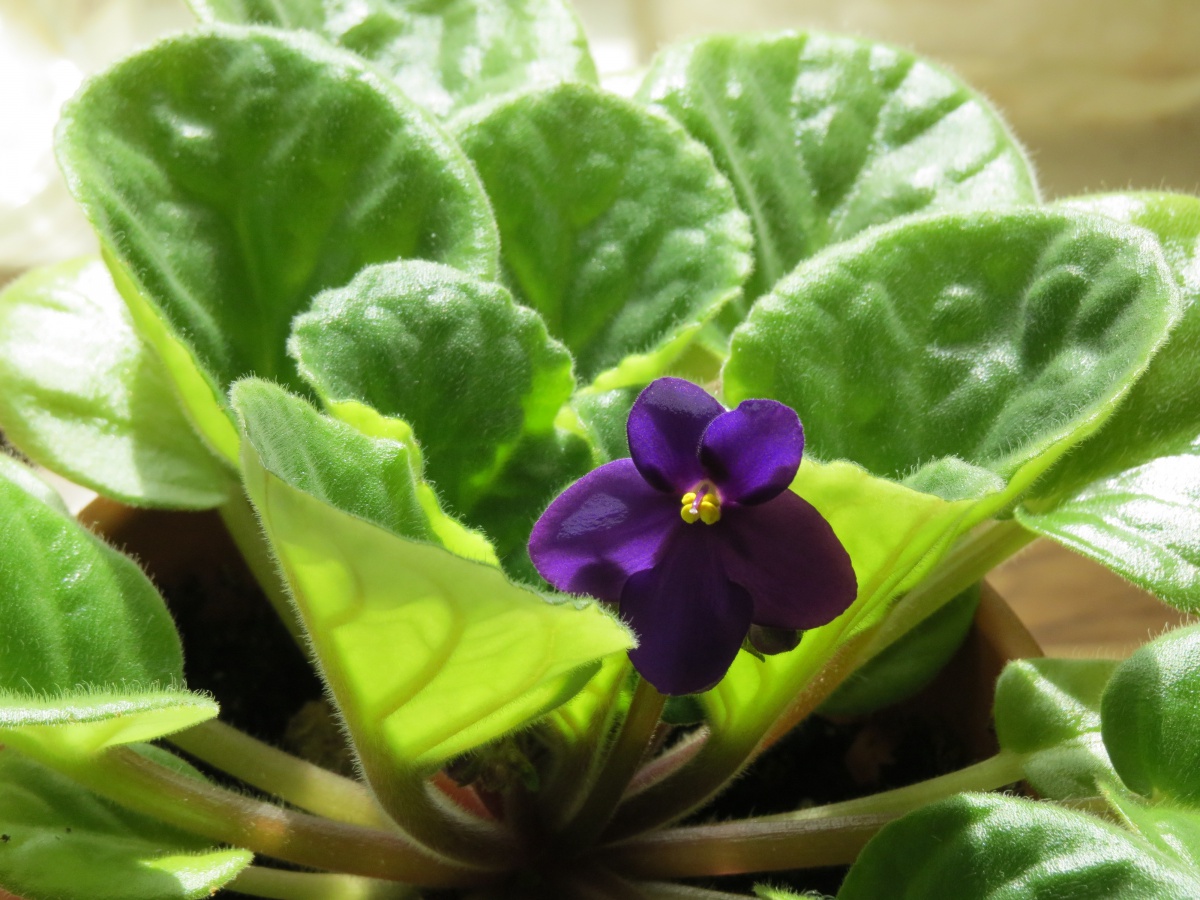
Amaryllis
Amaryllis bulbs in white, pink, red, and variegated colors are available from local garden centers and mail order houses. Given proper care and attention, the bulbs will last a lifetime. The initial large flowers are usually formed on a tall stalk before many leaves appear.
For best results, plant the bulbs in at least a six-inch pot. Place an inch or more of broken pottery or pebbles in the bottom to insure adequate drainage. Use completely artificial potting mix or a potting soil composed of one-part soil, one-part perlite, and one-part peat moss. Plant the bulb with ½ to ¾ of the bulb protruding above the soil line.
Plan to grow at 60°F at night and 10 to 15°F warmer during the day. Water well and place the bulb in a sunny window. Keep the plant on the dry side until the flower shoot appears, then continue watering. Once the flower fades, fertilize and water to encourage a heavy crop of leaves. Remove the withered flower stalk promptly. The pots may be sunk into the soil in a flower bed after the danger of frost is past in the spring. Give full sun and water well. It is best to encourage the plant to continue growth rather than to employ the old practice of letting it go dormant by withholding water during its natural rest period of October through December.
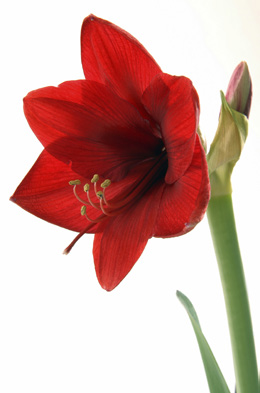
Azalea
Azalea varieties which are used for flowering in pots come into bloom after careful manipulation of temperature and light. To extend the flowering period, follow these suggestions:
- Keep the plant in the coolest part of the house (60 to 65°F).
- Place it in a well-lighted location.
- Keep the plant well-watered.
- If the plant dries enough to be severely wilted, submerge it in a pan or bucket of water until air bubbles stop coming to the surface.
- Remove faded flowers.
- Use a liquid fertilizer regularly if you plan to keep the plant.
The varieties of azaleas used for pots are not hardy in New Hampshire. If you want to try to save the plant and keep it outdoors, wait until after danger of frost, then plunge the plant pot into the soil in a semi-shaded location. Pinch back vigorous shoots by July. Leave the plant outdoors in the fall as long as possible, but bring it in before the first frost. Keep it in a cool and well-lighted location (as low as 45 to 50°F if possible but do not let it freeze) until about Christmas. Then, move the plant to a warmer place in the house and keep it well watered; the buds will begin to swell. Flowering may not be as profuse as when it was purchased, but most homeowners are satisfied with the results. Azalea plants require acid fertilizers. These are available at garden centers or flower shops and should be applied monthly during active growth.
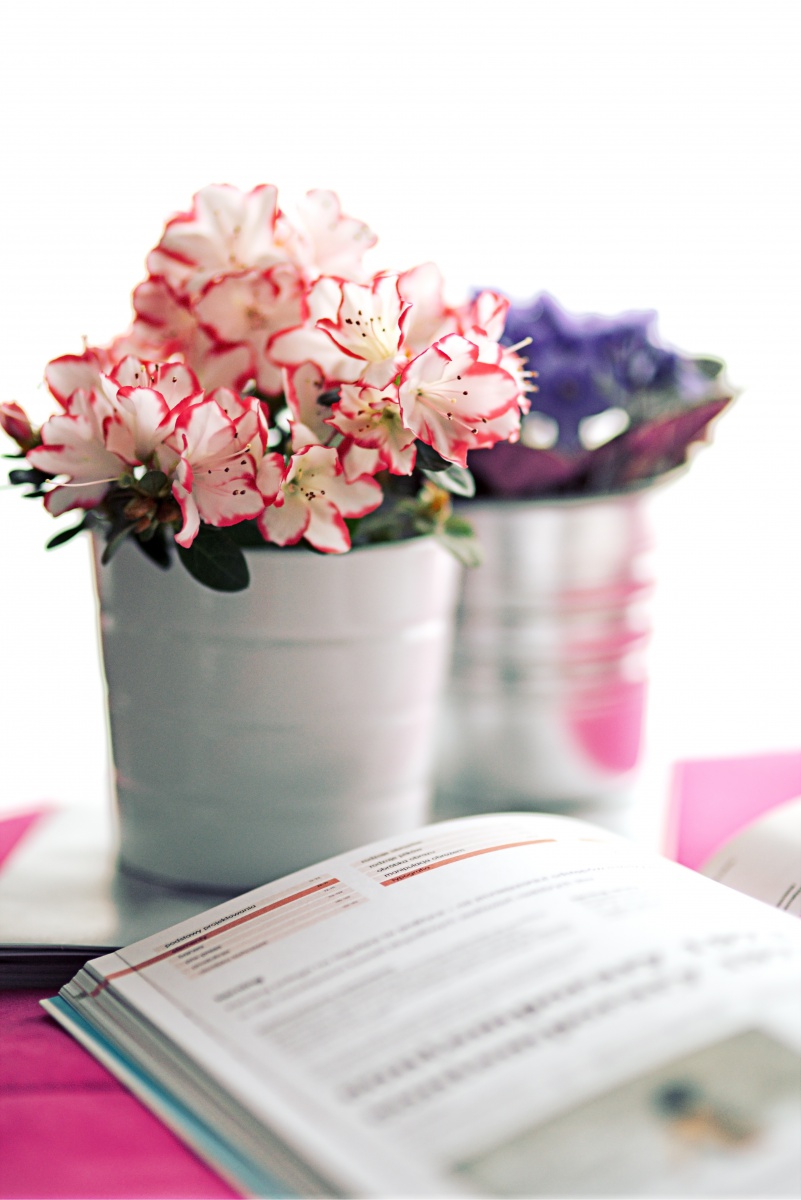
Begonia
Several types of begonias are enjoyed by home gardeners. The Rieger begonias are a recent hybrid development, with large flowers and the ability to bloom over a considerable period. There are upright growing forms and several are suited for hanging pots. Grow them in full sun except during the brightest summer months. Temperatures of 60°F at night and 70°F during the day will keep most of the entire begonia family happy. Since Rieger Begonias are usually grown in well-drained soil, water them when the soil is still somewhat moist. To keep the plants looking attractive, remove faded flowers, occasionally pinch back vigorous shoots, and feed monthly with a complete fertilizer.
The Christmas begonia (Begonia socotrana) is an old-time favorite available during winter months. This colorful plant will bloom for weeks if purchased with numerous buds. Keep the soil moist at all times to provide water to the succulent foliage and to promote flowering. Keep your plant in bright light and in a cool location. This species is one of the most difficult to maintain for good growth and re-bloom in the home; it is usually discarded after enjoying it.
The tuberous rooted begonias (B. tuberbybrida) is a summer blooming species which have become popular as a patio pot plant and as a plant of semi-shaded gardens. Although it does not always bloom satisfactorily indoors, tubers can be started indoors in March and seeds in January for outdoor flowering. Pot tubers during March in a mixture containing up to 50 percent peat moss. As growth progresses, grow them in full sunlight at the suggested 60°F night and 70°F day temperatures. In May move them to an indirect light location and then, after the danger of frost is passed, to a shady site outdoors.
Several factors can cause flowers and buds to fall, including: too high temperatures, poor drainage or over watering, dry soil, and excess sunlight. Again, monthly light fertilizations should be adequate. Gradually withhold water in early fall. When the tops have died down (avoid heavy frosts), remove the tubers from the soil, clean gently, and air-dry them for several days. Then store in dry sand, peat, or Vermiculite in a cool, dry area (45 to 50°F) until you are ready to repeat the process.
Wax begonia (B. semperflorens) does well as a house plant and can be used outdoors in many ways. This species comes in a pleasing array of colors and hybrid forms. If given full sunlight except for the hot summer months, most specimens should stay in good condition and continue blooming. Provide uniform watering and regular but moderate fertilization. Avoid a hot, dry atmosphere. To encourage full, bushy growth, pinch out the tips of the main shoots. Insufficient light causes the wax begonia to get spindly and stop flowering. Lack of nitrogen causes poor color and stunted growth. It may be better to propagate vigorous new plants from stem cuttings rather than trying to over winter plants lifted from the garden. Plants may also be started from seeds.
Other begonia types such as the “Angel Wing” forms and the many ornamental leaf begonias (usually rhizomatous) such as Rex and Iron Cross are also popular. Their culture is similar to the other begonias mentioned. The latter foliage types usually thrive in warmth, high humidity, and, bright light, but little direct sun.
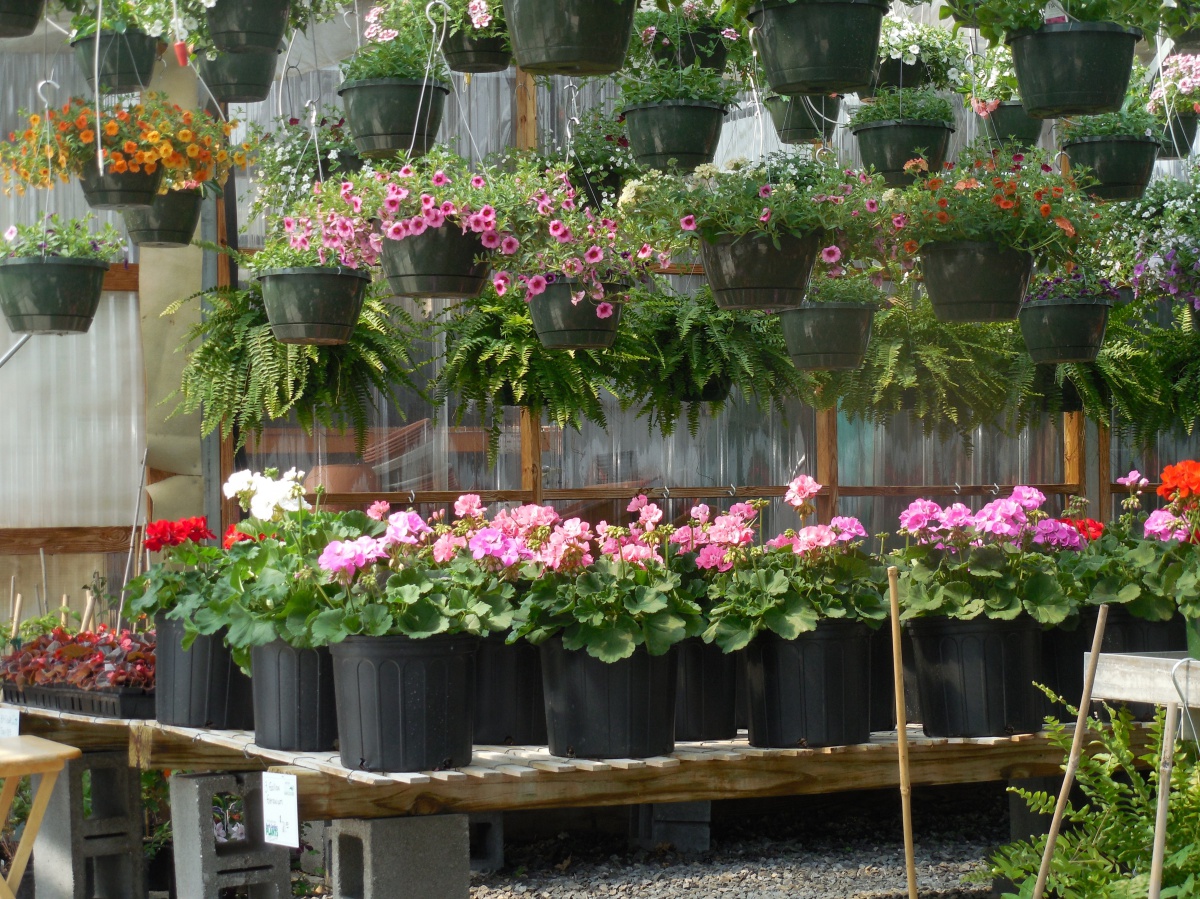
Christmas Cactus
This is another long-time favorite which is usually available in shades of red. Most varieties and hybrids bloom during winter and spring. Although a member of the cactus family, the Christmas Cactus should not be kept dry. Keep the soil moist to promote flowering. Place the plants in full sunlight during daytime. Night temperatures should be between 60 and 65°F. This cactus can be grown outdoors during summer in cool, shaded areas. Fertilizer should be applied during periods of active growth.
To have a plant in bloom for Christmas, on September 1st begin exposing the plant to short days. Keep it in total darkness for 12 to 14 hours each night until buds form. The temperature should be under 65°F during this period. Buds will not form at temperatures above 70°F, even with long nights. At 55°°F, flowering occurs regardless of day length. Bud drop results when the temperature is too high or light intensity too low.
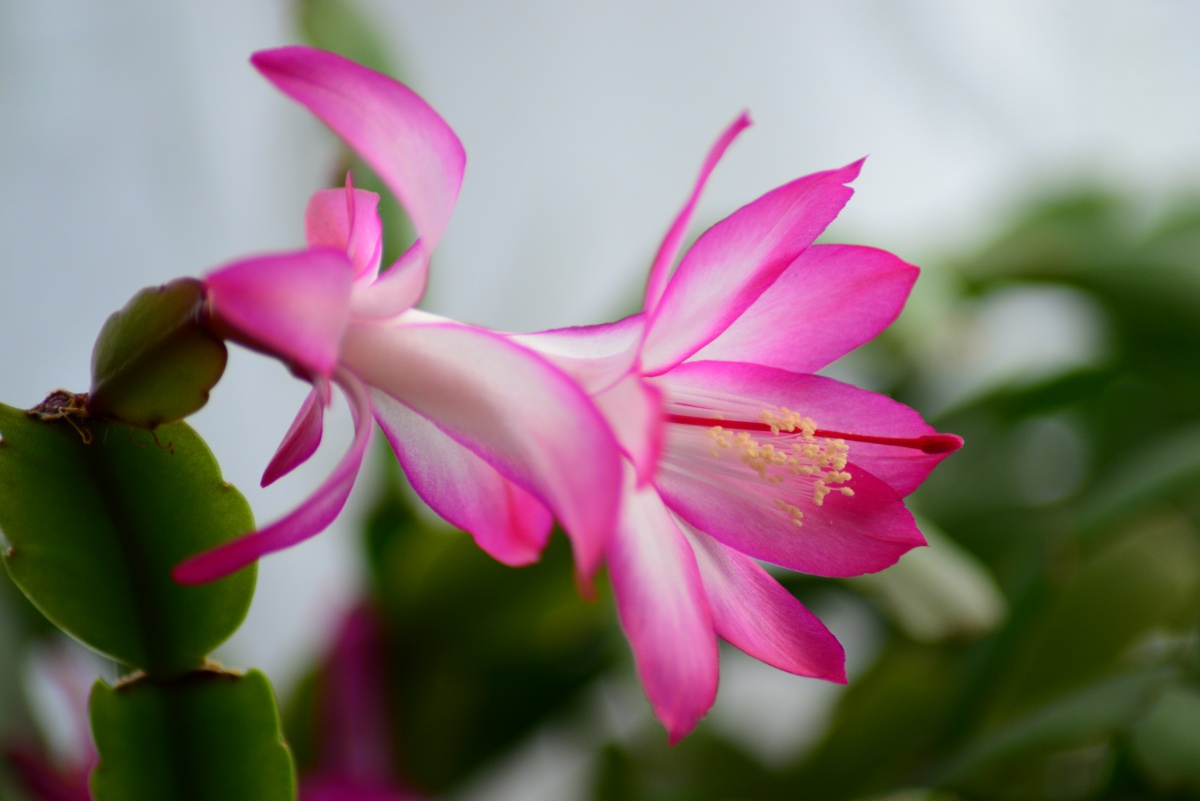
Chrysanthemum
Among the longest-lasting popular flowers for the home are potted chrysanthemums, which are available throughout the year. Varieties are available in yellow, bronze, red, lavender, pink, and white, in a wide selection of shapes and sizes.
A long period of bloom can be obtained by selecting plants with partially-opened buds. Sunlight and a night temperature of 60 to 65°F will assure full color in the developing flowers, and will prolong bloom. Chrysanthemums require large amounts of water; the soil must be kept moist to avoid wilting. Usually, the grower has provided sufficient nutrition so the recipient will not have to feed the plants during the blooming period.
Most potted chrysanthemums are tender greenhouse varieties which are not satisfactory for outdoor use. Their flower buds are killed by frost before bloom and the plants are not winter-hardy. Garden varieties which can be planted outdoors for fall re-bloom are available in the spring. These early blooming garden mums may also be obtained in containers in early autumn. Because chrysanthemums are photoperiod-responsive (i.e., responsive to day length) most home gardeners have neither the time, resources, nor the inclination to follow an exacting schedule for manipulation of the environment during propagation, vegetative growth, and flower initiation. Late-blooming varieties lifted from the garden in fall usually do not live up to their anticipated performance indoors.
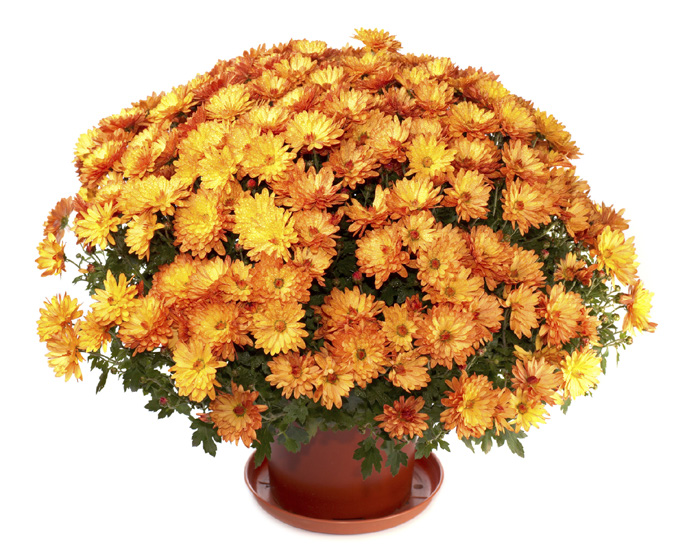
Cineraria
Few plants present such vivid array of spring colors. When purchased with ample buds and provided with good light, plenty of water, and very cool temperatures, they bloom a long time. The light should be bright but not direct sunlight. Grow and keep at 50°F at night and 60°F during the day. Cinerarias wilt if the soil is the least bit dry. If the bushy foliage becomes too dense, some of the larger or yellowing leaves might best be removed. Cinerarias are grown from seeds and handled as annuals. Discard it after flowering.

Citrus
Many species and varieties of citrus plants (oranges, lemons, limes, tangerines, and grapefruits) are used as ornamental plants. Their glassy, dark-green foliage, fragrant bloom, and colorful fruits are highly decorative. Otaheite and Calamondin oranges and Ponderosa and Meyer lemons are especially desirable dwarf types that flower and bear fruits while they are very small.
Direct sunlight is essential to promote flowering. Plants grow and develop fruits best at temperatures ranging from 50 to 70°F. The soil must be kept moist; a potting mixture of equal parts sand, garden loam, and peat moss will assure good drainage. An acidic growing medium is required to prevent yellowing of the foliage. During periods of active growth, a fertilizer solution recommended for azaleas should be applied.
During summer months, the plants can be moved outdoors. Well-grown specimens are attractive on terraces or patios. Ungainly growth should be pruned to keep the plant compact.
Citrus plants can be grown from seeds, but the dwarf types which are especially adapted for pot culture are usually propagated by grafting and from cuttings. A common practice in homes is to grow plants from seeds of regular citrus fruits, although they may not reproduce the characteristics of parent trees and require many years to reach fruiting age.
In order to bear fruits, the flowers of a citrus plant must be cross-pollinated. Use a small brush to transfer the pollen from one flower to the stigma of another on a plant grown in the house. Plants which lack vigor or have been injured by insects will not bear fruit.
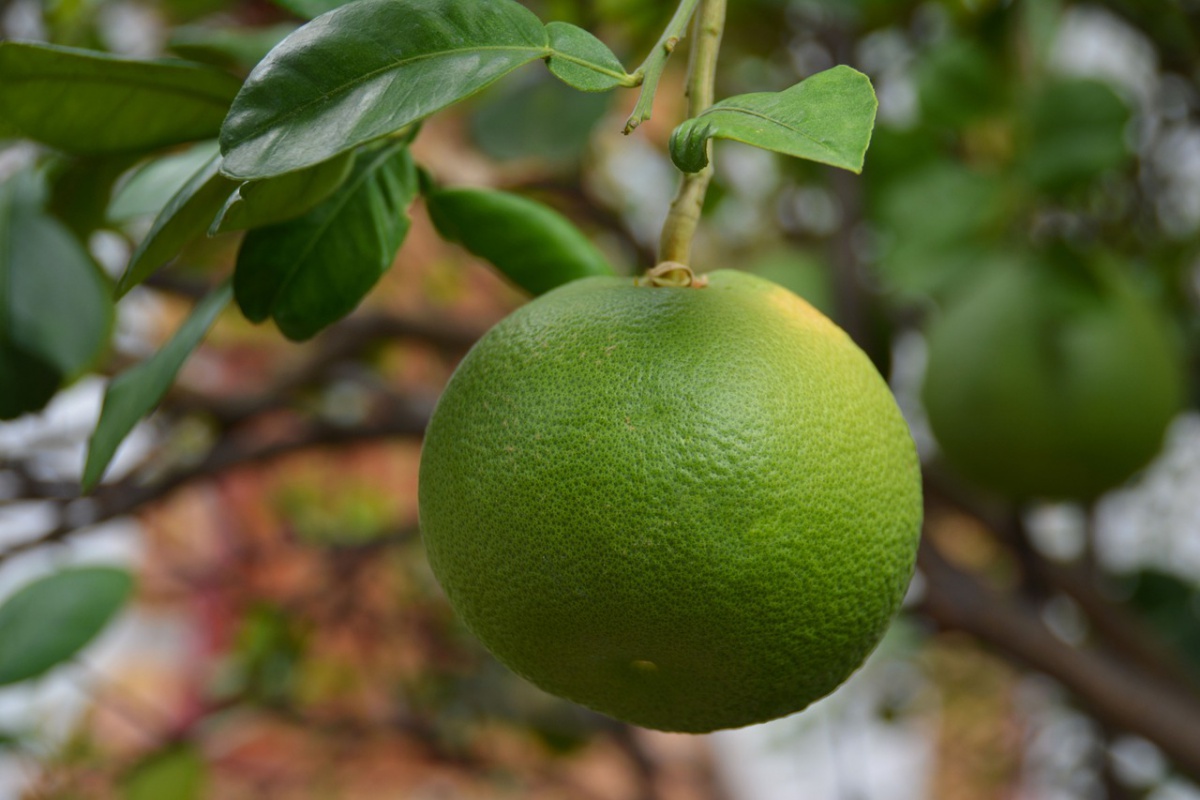
Cyclamen
Cyclamen plants are known for their compact foliage and abundant bloom. The flowers, borne at a level above the leaves, are white, pink, or red. The plants are difficult to maintain in most homes. They require night temperatures of 50 0F and day temperatures of 60 to 650F in full sunlight. The leaves turn yellow quickly and flower buds die if the temperature is too high or light intensity and humidity is too low. Inadequate soil moisture also produces adverse effects.
After flowering, withhold water to induce dormancy and store the pot in a cool location until the following June. Repot the corm in a sterilized soil mixture of one-part peat moss, one-part garden loam, and two-parts coarse sand. Leave the upper half of the corm exposed to prevent rotting.
Fertilize the plant twice a month with a quarter teaspoon of a fertilizer such as 5-10-5 dissolved in a quart of water. Keep the plant in indirect bright light until mid-September,
then expose it to full sunlight at low temperatures for mid-winter flowering. When watering, keep the water out of the crown where the foliage originates. Cyclamen will not set buds at temperatures below 500F.
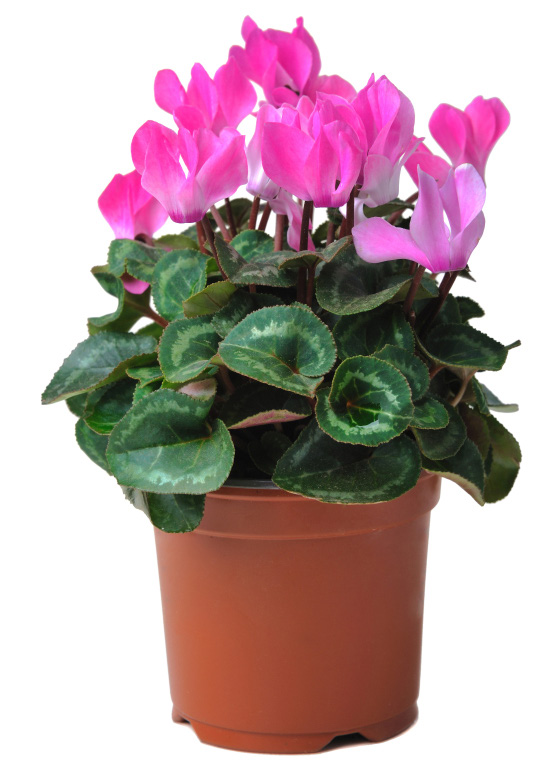
Easter Lily
The Easter lily needs little special treatment. Keep it moist but do not over water. Check daily and be sure the pot does not stand in water. Keep the lily in a bright, cool place. This will lengthen the flowering time, especially if it is draft free. Remove faded flowers to keep the plant fresh looking. When all of the blooms have faded, reduce the watering so that the plant will gradually dry. Cut off the dry stem a few inches from the soil. After the danger of frost is passed, plant the bulb in a protected place outdoors at a depth of four to six inches. Often, the lily will flower again in late summer or early fall.
Easter lilies are not normally hardy in New Hampshire but may persist in the garden for several years if protected with mulch. It is usually not practical to repot them and bring them back in the house. They require a rather exacting cold storage treatment prior to an early December replanting for a spring flowering.

Fuchsia
These charming plants are being seen more and more in hanging baskets and containers. Both the single and double forms require a great deal of light, but require same protection from the hot sun. Fuchsias do best in rather cool locations (50°F at night and 60 to 65°F during the day). Their soil should be moderately rich, hold adequate moisture, and have perfect drainage. If the plant is to be retained for any length of time, fertilize about every four weeks during active growth. In the summer, it is usually best to place the plants outside in a bright but protected shady spot. Bring indoors before frost.
In early fall, either take cuttings to start new plants or allow the plants to go dormant for about five weeks by drying them off. Water only enough to keep the stems from shriveling. Some loss of foliage will occur. Keep the plants at 45 to 50°F, if possible, during this period. After the dormant period, repot in a slightly larger pot, move to a window, and water cautiously until growth is well started. Remove dead wood and prune back the branches to shape the plant. Water the plants thoroughly when the surface of the soil feels dry to the touch.

Gardenia
The lush, green foliage and fragrant, white flowers make this plant a favorite for many people. However, uniform and exacting conditions are essential in growing them. Gardenias require full sun and temperatures around 62°F at night and about 70 to 75°F during the day to develop properly. The highest humidity possible should be maintained around the plants. Misting or syringing the foliage daily with room temperature water is often suggested when the plant is in bud and bloom.
Although gardenias will not always develop flowers indoors, their dark green leaves make them attractive foliage plants. Bud drop is the most frequent complaint with gardenias. Some of the contributing factors are: lack of uniform or adequate soil moisture, low humidity, too warm or too cold conditions, rapid temperature fluctuations, and insufficient light. Insect pests also lower the plants’ vigor.
For continued growth, gardenias must be planted in acidic soil. From March to November, fertilize monthly with an acidic fertilizer. Before taking your gardenias outside for the summer, prune them back to encourage fuller branching. Repot if needed into larger containers with a mixture of well-drained loam soil and peat moss. Place or sink the pots into a location which will receive full morning sun, but will be protected from the direct rays during the hot afternoon. Keep the plants well-watered and bring them back indoors when frost threatens.
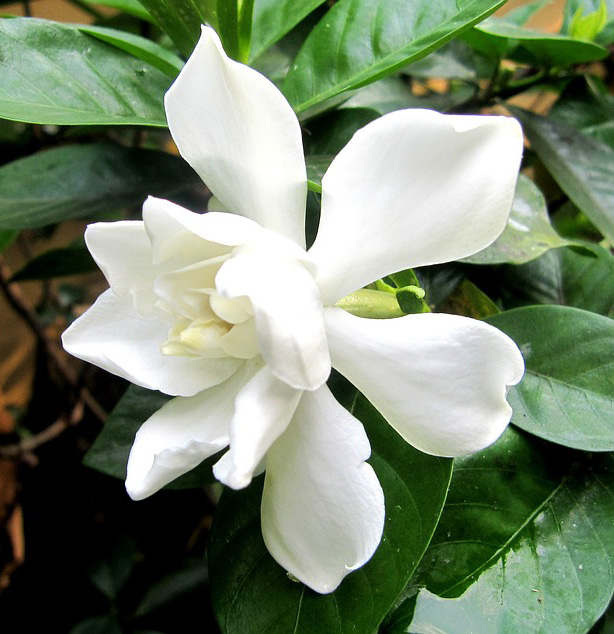
Geranium
Geraniums will grow and bloom with little more than basic care. They are available in the spring, and come in white or in shades of red and pink. Because low light intensity reduces their flowering and causes elongated growth, they need full sunlight when kept indoors. Night temperatures between 55°F and 60°F promote development of flower buds. The soil should be kept moist, and low-concentration fertilizer should be applied regularly. Water well but never allow the soil to remain soggy.
Geraniums have long been an excellent plant for gardens, planters, and window boxes. Because they are tender woody perennials, they are not winter hardy. It is best to discard plants in the fall and purchase new ones the following spring. Tall spindly, light-starved plants pulled from outdoor plantings the previous fall seldom yield the quality desired in spring.
Plants can be propagated by cutting four-inch long terminal or lateral shoots from the plant in September. Plant each cutting in a small pot containing equal parts peat moss and coarse sand. Shade the cuttings from direct sunlight and keep the medium moist until the cuttings root. After roots are one inch long, reset the plants in three- or four-inch pots, using a well-drained soil mixture. When the plants are four or five inches tall, cut or pinch off the tips to induce branching. Some geraniums may also be started from seeds. Ivy leaf, dwarf, and scented leaf forms are also available.

Gloxinia
Gloxinias are colorful indoor plants which are available throughout most of the year. They have bell-shaped spotted flowers that come in various color combinations.
They are members of the same family as the African violet and have common cultural needs (their temperature, light intensity, and watering requirements are similar). Gloxinias react quickly to unfavorable growing conditions. Flower buds may fail to develop because of improper watering, low humidity, or quick temperature changes.
Reducing soil moisture will hasten the natural dormancy which occurs after gloxinias flower or in late summer. Tubers can be retained for re-growth by storing them in pots in a cool place (minimum temperature of 500F). For re-bloom the following spring, repot tubers in February in a standard soil mixture of equal parts garden loam, coarse sand, and peat moss.
The plants will require low-concentration fertilizer from the time they are re-potted until they begin flowering. Gloxinias can be grown to maturity with artificial light. Thin, spindly growth occurs in light which is too dim. Keep cold water off the foliage and out of the crowns. Drainage should be excellent and the soil should maintain moisture but not remain water-logged. Turn the pots to keep the growth symmetrical if the light source is primarily from one side.

Kalanchoe
Kalanchoe plants are small, compact, and bear red or orange flowers in clusters above the foliage. The plants are usually available throughout winter. For extended bloom, they require cool temperatures, full sunlight, and constantly moist soil. Newer hybrids have brought a new dimension to this group of plants.
After flowering, the plants can be retained for their foliage if they receive direct sunlight. Ungainly new growth develops if they receive too little light. Rebloom is unreliable without controlled day length. For Christmas bloom, put the plants in complete darkness from 6 p.m. until 7 a.m. for 30 days, beginning September 1st. After this treatment, plants will develop buds under normal conditions. Keep at 65°F at night and 70°F during the day. Water when soil surface starts to dry. Fertilize lightly at monthly intervals during active growth. New plants can be carried over outdoors during summer. Pinch out the shoot tips in mid-summer to develop a more compact plant. Protect the plant from the hot sun’s rays.

Poinsettia
Since new long-lasting varieties have been developed, the poinsettia has continued to be one of the most popular flowering plants, especially the red varieties for the Christmas season. White, pink, and variegated pink and white varieties are also being grown both as single stem and multiple stem plants.
Following these few suggestions will keep the plant in good condition for a longer time:
- Keep the plant out of hot or cold drafts.
- Check soil moisture daily. Do not allow the pot to stand in water or root rot may develop.
- Give the plant plenty of light.
- Keep the room temperature between 65 and 70°F. It is not recommended that the plant be placed in a cold room at night. Keep it where the temperature is always above 60°F.
If conditions in the home are not too favorable for poinsettias, the plants may drop the decorative bracts and lower leaves. Newer varieties, however, may still remain attractive for months. While the plant is in the home, it should be well-watered. Poinsettias require high light intensity; thus the plant should be placed in a sunny window. It should be protected from drafts and also from rising air currents from radiators or other heat sources.
Poinsettias can be brought back into flower, but the procedure is more involved than most people want to bother with. Most varieties respond to the following technique:
- After the colorful bracts have faded and fallen, cut the plant back to within six inches of the soil or, if it is a large, multi-branched plant, to within six inches of the main stem.
- When all danger of frost is past, place the plant outdoors in a protected but sunny area.
- Fertilize and water through the summer.
- In late July or August, cut the stems back leaving three or four leaves per stem. Cuttings may be taken and rooted at this time for September potting.
- Before frost, bring the plant into the home and put it in a room with temperatures around 65 to 70°F. Keep it in a bright location.
- From the last week of September until early December, the plant should be exposed to only natural daylight. Any amount of light during the natural dark hours at this time of the year, even the light from a lamp, will delay flowering. During this period, cover the plant at night or place it in a closet or room without lights from 5 p.m. to 8 a.m.

Primrose
Several species of primroses (Primula) may be commonly found at florist shops, including P. malacoides, P. obconica, P. sinensis, and P. veris. Although primroses are actually perennials, they seldom re-bloom satisfactorily. Of the species mentioned, forms of P. veris are the hardiest outdoors and will not cause an irritating rash to susceptible persons.
Select specimens with a profusion of buds. Place primroses where the diffused light is good. For the longest possible enjoyment of the flowers, the temperature should be kept at 50°F at night and no higher than 65°F during the day. All primroses require considerable water and are damaged when wilted. Propagation is usually from seeds.

Rose
Potted roses are available during the spring months. Among the types used for forcing are the Floribundas, Polyanthas, hybrid teas, hybrid perpetuals, and climbers. These are all garden forms and should be planted in the garden when weather permits. Miniature roses (Rosa hybrids) are also offered.
Indoors, potted roses demand high light intensity. However, direct sun when coupled with a hot, dry atmosphere will reduce flower life. Reduce the room temperature at night to about 60°F. Give roses plenty of water. Roses also require regular fertilization. Remove old flowers and be alert for insect and disease pests. Pruning or pinching may be desirable to direct growth with some of the more vigorous varieties.
Miniature roses are best for a sunny window during freezing months. Keeping them outdoors during winter in Northern New England is often quite risky.

Spring Flowering Bulbs
Tulips, hyacinths, narcissi, crocuses, and grape hyacinths are often sold in pots during winter and spring. These plants should be purchased in the bud stage for extended flowering indoors. Follow these suggestions for taking care of them:
- Keep plants in a cool place, around 60 to 65°F.
- Select a bright location. However, direct sunlight may hasten flower development and shorten the flower life.
- After flowering, remove spent blooms.
When flowering is finished, reduce the water and allow the plants to mature and the leaves to dry gradually. Cut off the dry foliage and remove the soil from around the bulbs. Store the bulbs in a cool, dry place until fall and then plant them in a flower border or bulb garden during fall. Hyacinth, daffodils (narcissus species), and the so-called minor bulbs usually do better than “re-cycled” tulips in the garden. Trying to re-bloom or force the same bulbs again in the home is usually not satisfactory because of depleted food reserves and the need for initial low temperature conditioning. Starting with new bulbs is recommended for both indoor forcing and outdoor plantings.
To force bulbs into bloom indoors, plant hardy bulbs in late October in regular flower pots or bulb pans. Use a well-drained soil mixture and water the containers thoroughly after planting.
To start growth, hardy bulbs require cold storage at a temperature of 40 to 50°F. Bury potted bulbs outdoors in leaves and cover the leaves with sand or sawdust. Potted bulbs can be buried in soil, but it is difficult to remove them in January when the soil is frozen.
Instead of putting the bulbs in cold storage outside, you may store them in a dark basement or room (such as a vegetable cellar) if the temperature does not go over 50°F. To prevent tops from growing too much during storage, keep bulbs at 40°F rather than 50°F.
Success with forcing hardy bulbs depends upon their developing roots during the cold storage period. Leave the pots of bulbs in cold storage at least until the first week in January. Then bring pots of bulbs indoors as desired.
Once you remove bulbs from cold storage, put them in a partly shaded location with a temperature of 60 to 65°F. Since many homes are not kept this cool, put the pots in a room where the temperature is as close to 60°F as possible. Leave them in this location until the shoots begin to show green color. Gradually provide more and more light until they receive high light intensity.
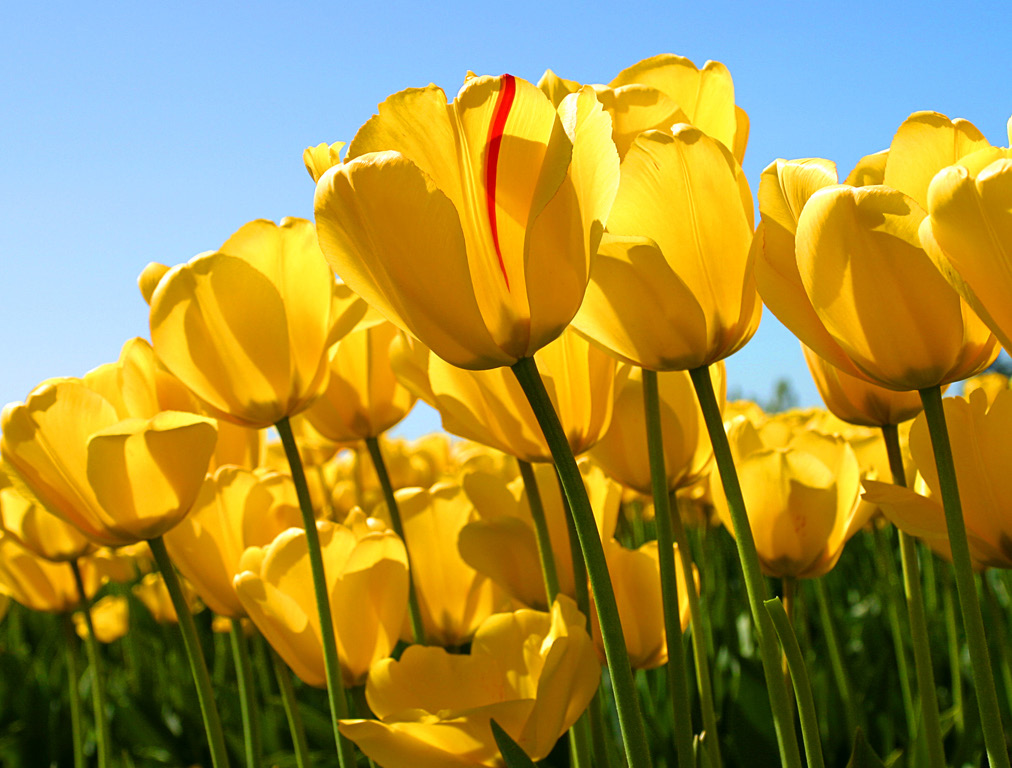
Terrarium, Dish Garden, and Miscellaneous House Plants
An additional large number of attractive plants is often available for enjoyment in such places as homes and offices. Even many of the so-called foliage or tropical plants will also bloom occasionally.
Because of the variety of plants used in both container gardens and as specimen plants, it becomes difficult to give any specific cultural hints. Hopefully, plants of like culture have been planted together, and there is not a combination of cacti and tropical foliage plants in the same container.
Because many decorative planters do not have drainage, it is important to water carefully. Many of the foliage plants will withstand much lower light conditions than most flowering plants. Therefore, some of the planters may be used on tables away from the window. Your local florist, plant supplier, or Cooperative Extension Service office may be able to supply you with additional information on these plants. Many leaflets, bulletins, and books on specific plant culture are also available for the person who wants to know more about the topic.
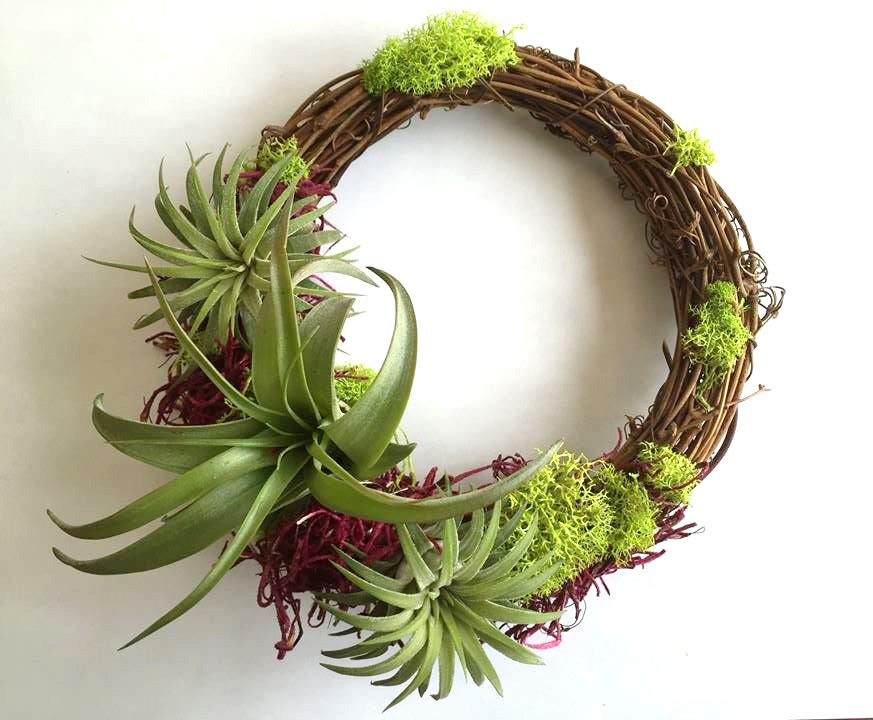
Written by Charles H. Williams, Extension Specialist Emeritus - Ornamental Horticulture
Updated: December 2016
